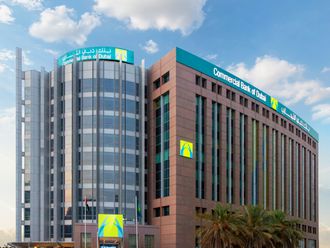Dubai
The GCC region dominates the global Takaful (Islamic insurance) industry, by representing 77.2 per cent of the world’s Takaful gross written premium (GWP) in 2015, according to a recent report by Alpen Capital.
At an estimated US$11.5 billion, the region’s Takaful market has grown at a CAGR of 18 per cent from 2012 and accounts for nearly 44 per cent of the GCC insurance sector. Preference towards Sharia-compliant financial solutions and an expanding non-life market are the factors aiding growth. Saudi Arabia is the largest Takaful market in the region with a GWP of US$9.7 billion. The market size is same as that of the overall insurance industry in the Kingdom, as all the domestic insurance firms follow a cooperative model, which requires being Sharia-compliant.
The Takaful markets in the other countries in the GCC are relatively small with a market size of less than $1 billion. “At 0.5 per cent in 2015, the penetration level of Takaful insurance in the GCC is much lower than the conventional insurance sector. This presents significant opportunities for Islamic insurers,” said Siraj Bhavnagarwalla, Managing Director, Alpen Capital (ME) Limited.
There are about 40 Takaful players in the region, excluding Saudi Arabia that is home to 35 Sharia-compliant insurance companies. The market appears overcrowded in view of several companies competing for the petite size of premiums.
The Takaful providers faced a slowdown in premiums last year, however, the listed Takaful players reported pre-tax net income of $683 million during the year, a substantial increase from $274 million in the previous year. This is mainly a reflection of the performance in Saudi Arabia, wherein players benefited from the implementation of actuarial pricing ensuing into a rise in pricing of motor premiums. “A relatively small size, less diverse business and short tenure of experience compared to the conventional players, places the Takaful insurers at a higher degree of risk to economic deceleration,” said Bhavnagarwalla.
The Takaful industry is developing, given the low penetration levels and a maturing regulatory framework. Insurance regulators in the UAE, Bahrain, Oman and the independent financial hubs of Dubai International Financial Centre (DIFC) and Qatar Financial Centre (QFC) have introduced regulations specific to the Takaful industry.
Qatar (excluding QFC) is redrafting its regulatory framework to include specific laws for the Takaful sector. Kuwait in its new insurance law draft has also set specific rules for the sector. In November 2016, the UAE Insurance Authority capped the wakala and mudarabah fee on annual renewable policies at 35 per cent of GWP and investment income. Such new regulations aim at standardising processes, developing corporate governance, strengthening technical provisions and protecting the interest of policyholders.
Reinsurance gains from high cession rate
Dubai: In the GCC, on an average 37.3 per cent of non-life insurance premiums are ceded to reinsurers, which is significantly high compared to the global average of 8 per cent.
The high dependence on reinsurers is due to lack of expertise and low risk appetite of the local companies in underwriting large hydrocarbon projects. Based on the cession rate, the GCC non-life reinsurance market amounted to $8.6 billion in 2015. Except for Qatar and Saudi Arabia, the other countries had cession rates above 40 per cent in 2015. The rates have declined across the countries, barring Bahrain, due to growing proportion of motor and medical insurance lines, which have low cession rates. Commercial insurance lines command a high rate due to the large risk involved and lack of technical expertise.
A decline in cession rates, alongside slowing down of large commercial and infrastructure projects, have affected the performance of GCC-based reinsurers. Moreover, the reinsurance market is witnessing overcapacity, with local as well as international companies competing for the high-ceded premiums. Intense competition is putting pressure on renewal rates, thus affecting the underwriting margins of reinsurers. Nevertheless, this looks a short-term impact and the long-term appears convincing due to the low insurance penetration, need for underwriting expertise on large projects and limited exposure to catastrophe risk. Most of the reinsurers are international firms focusing on conventional reinsurance, underwriting large commercial risks and providing expertise as well as capital. Family Takaful, engineering, construction and energy are the key areas offering business potential for reinsurance firms in the region.










